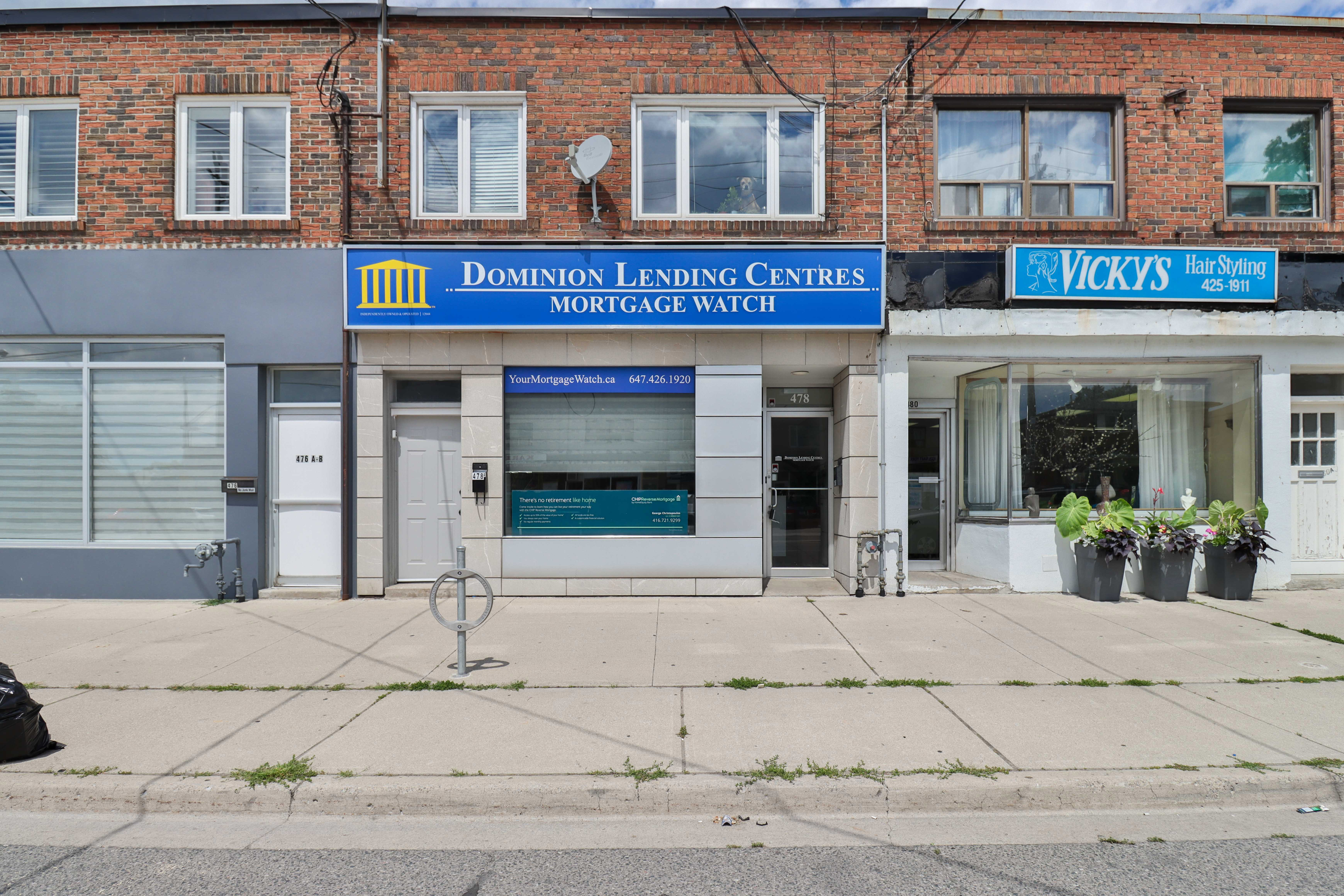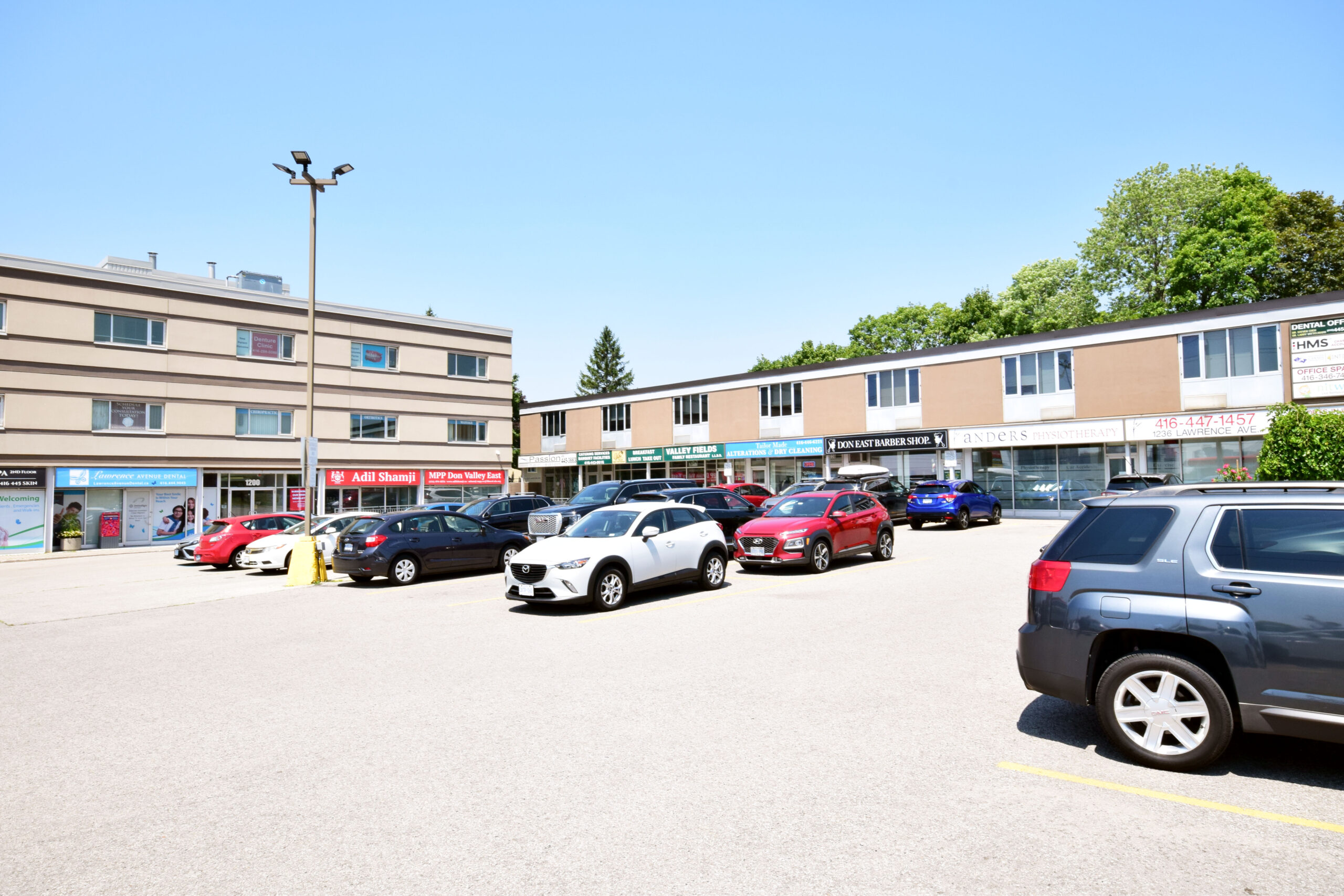Author The Lilly Commercial Team

Predicting Market Cycles: How to be less wrong. Commercial Real Estate (CRE) Adds To Production On The Supply Side Of The Economy.
In 2008, it took two months from the crash for countries to begin printing money. In 2020, it took just two weeks. We heard “inflation is not a problem”, then we heard “it is transitory” and yet . . . here we are today.
Predicting market cycles is nearly impossible. But history rhymes and cycles follow typical patterns. Our industry has many veterans who lived through such cycles and recognize these patterns.
I am not one of the veterans. But, I look for answers in history.
In my first Predicting market cycles article I asked, “If central banks increase rates to control inflation, what will it do to the economy?”
My question came from models developed by renowned investors like Ray Dalio and Howard Marks. Now that we are living this reality, it seems fitting to write a second chapter.
Not all recessions are created equal
From post-Second World War until the 1970s, we saw classic industrial inventory cycle recessions. The U.S. had a manufacturing economy, and when there was excess inventory and a change in demand, there was a sharp and short-lived recession.
Blue-collar workers would suffer layoffs, followed by a rebound in employment.
But in the 1970s and 1980s, recessions were fundamentally different – caused by U.S. federal government fiscal policy. The U.S. became dependent on imported commodities and the economy was vulnerable to supply shock.
Funding the Vietnam War (among other things) led to budget deficits and that led to inflation. The 1970s became a decade of “stagflation”. This is because of the Bretton Woods System (the end of gold standard and creation of a fixed international currency exchange) and the dependence on international oil prices.
A sluggish economy with inflationary pressure was new to the U.S. President Jimmy Carter appointed Paul Volcker to deal with it as the new Federal Reserve Board chairman.
Instead of focusing on the Fed’s two mandates – inflation and employment targets – Volcker focused on money supply growth. This led to sharp interest rate increases, spurred unemployment and helped lead to the 1980-’82 recession.
Volcker’s fiscal policies however, ultimately led to the end of skyrocketing inflation.
Does this sound familiar?
That is because central banks are following a playbook that once worked! Despite two recessions in the early 1980s because of high interest rates, Volcker is credited with keeping inflation under control.
Continuing to look back, as recessions became financial – based on market bubbles – we saw:
– 1990-’91 Commercial Real Estate (CRE) or “Credit-Crunch” ;
– 2001 Dot-com Bubble;
– 2007-’09 Housing Market Crash, Global Financial Crisis (GFC).
The problem with financial recessions is that they last longer. The de-leveraging must occur and it takes time.
Aggregate demand drops and liquidity is lower. This kind of recession tends to hit the service sector of the economy more strongly.
Inflationary forces: 2008 vs. 2020
“Inflation is always and everywhere a monetary phenomenon.” – Milton Friedman, 1963
Inflation didn’t happen after the 2008 GFC. Some economists thought that central bank balance sheets can swell without causing inflation, but they were wrong.
A few reasons:
– Central banks and governments used every imaginable lever to stimulate the economy during the pandemic – monetary and fiscal policies.
– As a result, the banks received new money and held on to the new money. Excess reserves doubled in the U.S. between February and May 2020.
– To encourage more lending, the Federal Reserve eliminated reserve requirements.
This put post-2008 measures to shame; 2020 stimulus was enormous in comparison. Worse yet, this time we also have inflation from supply-chain logjams and commodity shortages. Other things to blame are extreme weather, the war in Ukraine, geopolitics and de-globalization.
Inflation today is the key focus not only for capital markets but for households, businesses, politicians and media.
Central bankers walk a fine line of rate hikes vs. sparking a recession.
Everyone is thinking about the inflation-driven recessions of the mid-1970s and early 1980s. And about Paul Volcker’s playbook.
What does this mean for real estate?
The housing sector is a consumption good, part of final demand. But commercial real estate (CRE) adds to production on the supply side of the economy.
CRE is also considered a capital asset. Much like stocks and bonds, CRE is often found on the balance sheets of institutional investors and banks.
This means CRE helps add to employment and GDP. It is vital to economic recovery.
The housing sector responds faster to rate hikes. Canadian home prices declined for the second straight month – an abrupt turnaround in our housing market.
Many multifamily housing projects are being put on hold and this will impact the construction cycle. Yet people need housing and countries like Canada are in great demand for immigration.
How about the impact on CRE?
CRE has a smaller share of the market than housing, representing perhaps 1/3 and housing 2/3.
CRE also tends to be less directly related to the general macro-economic business cycle. Analysis of it is more complicated.
What will happen to CRE cap rates and prices?
What is the cap rate? In CRE it is the rate of return expected to be generated on an investment property. Cap rate = Net Operating Income (NOI) / Current Market Value (Purchase Price).
If NOI is $100,000 and it is purchased for $1 million, then the cap rate is 10 per cent.
When interest rates are low, cap rates are also low. With low interest rates, servicing larger debt requires less income – i.e. is “cheaper”. More cheap credit = more cash to buy. Due to demand, prices for CRE increase and cap rates decrease.
How are cap rates influenced by inflation? Cap rates follow real interest rates. Real interest rate = nominal interest minus inflation. E.g. nominal rate 5% – inflation 6% = real interest rate is -1%.
High inflation = cap rates decrease and property prices increase.
If real interest rates are lower, why do we see the CRE market expecting higher cap rates?
– CRE has long-term leases and fixed NOI. Real ROI drops with higher cost of servicing debt and fixed NOI.
– Buyers’ expectations of more nominal interest rate hikes and taming of inflation.
Values of CRE are not immediately reflected because they are typically based on income. And commercial leases are typically long-term.
As long as inflation is higher than nominal interest rates, expect real property value to go up. But there is a delay because lease rates are not immediately adjusted.
Putting it all together
We are facing inflation; central banks are raising rates, and everyone is worried about a recession.
Benjamin Tal says “60 to 65 per cent of the inflation we are seeing now – not all of it, but a big part of it – is COVID-related. If you all agree with that assumption that this is a transition year, that should disappear over the next year.”
I truly hope he’s right. But I am concerned that what many consider transitory tends to last longer.
China’s “Zero Covid” policy isn’t working – we have mass testing and restrictions. Goods are delayed in production and delivery.
The war in Ukraine isn’t ending and it’s causing food and energy problems around the world.
De-globalization means more warehouse space is needed to make and store goods during off-season to satisfy demand later (making goods more expensive).
Yet we have record low industrial vacancy; land and construction costs are driving warehousing prices ever higher.
Source Real Estate News Exchange. Click here to read a full story

The Construction Of Office Space Is Declining In Canada Amidst Runaway Inflation Increasing Construction Cost
A new report from Colliers Canada has found that although the number of under-construction offices is still very robust, with more than 15.7M sq. ft being built, that number is down from its earlier peak.
The office space that is going up is largely concentrated in downtown Toronto and Vancouver, Colliers notes. And there’s plenty of interest for it in those markets. In Toronto, downtown office occupancy is up 24%, compared to just 7% at the beginning of the year. And as the report states, employee attitude towards both travel and work safety has improved.
“Coupled with the warmer weather, this has led to a renewed vibrancy in the streets of the downtown core,” the report reads. “In the face of uncertainty regarding hybrid work, tenants have turned to experts in real estate and design to explore options for creating appealing and functional spaces for their employees, with flexibility and future-proofing at the forefront of tenants and designers’ minds.”
In Vancouver, demand is outpacing office supply, pushing the city’s office vacancy rate to fall to 5.8%.
“Larger office tenants form the most active segment but face a limited number of available options which continues to shrink,” the report reads. “Smaller tenants appear to be taking a wait-and-see approach as larger companies navigate the complexities of return to office strategies.”
But not everyone is jumping right back into the office real estate market. As the report says, the three already-implemented Bank of Canada interest rate hikes are causing significant drains on people’s wallets, giving pause to tenants and investors alike.
“Both tenants and investors have felt the impacts of the recent Bank of Canada interest rate hikes and their effects on consumer spending,” the report reads. “Tenants who do not have immediate space needs are taking the ‘wait and see’ approach to leasing, while higher interest rates have increased the cost of borrowing, leading to a smaller pool of buyers.”
Canada’s industrial market is similarly on the rise, experiencing a “bull run driven by fulfillment centres,” the report says. Across the country, rents are rising and vacancy has dropped below 1%. In major markets, the vacancy rate is even lower, hitting a minuscule 0.1% in Vancouver and 0.2% in Toronto.
Industrial rent prices are also on the up and up, rising 30% annually in some markets. In the Greater Toronto Area in particular, asking rental rates are up 35% year over year. Colliers notes that typically in the past, net rental rates would be discounted if tenants leased more space, but that discount is being offered much less frequently, if at all.
Source Storeys. Click here to read a full story
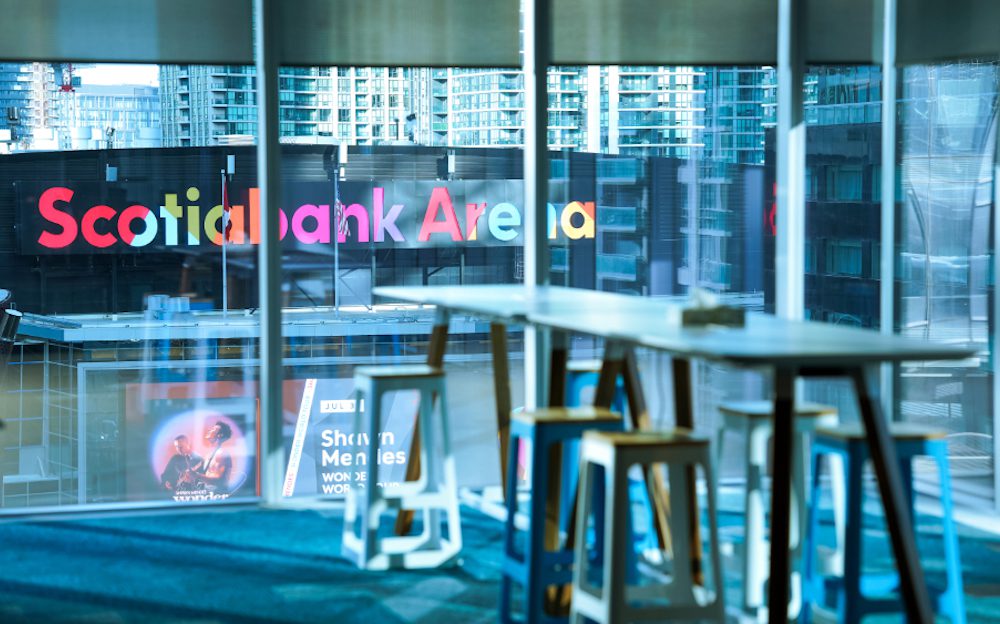
A Look Inside Amazon’s New Downtown Toronto Office
As employees continue their return to in-person working, Amazon is laying down even more roots in Toronto with a brand new downtown office space.
The company’s newest workspace, dubbed YYZ18, is now their third Tech Hub office in Toronto. Located across eight floors inside 18 York Street, the new office takes up an impressive 130,000 sq. ft and is home to teams working on everything from Amazon Music to Alexa to Prime Video.
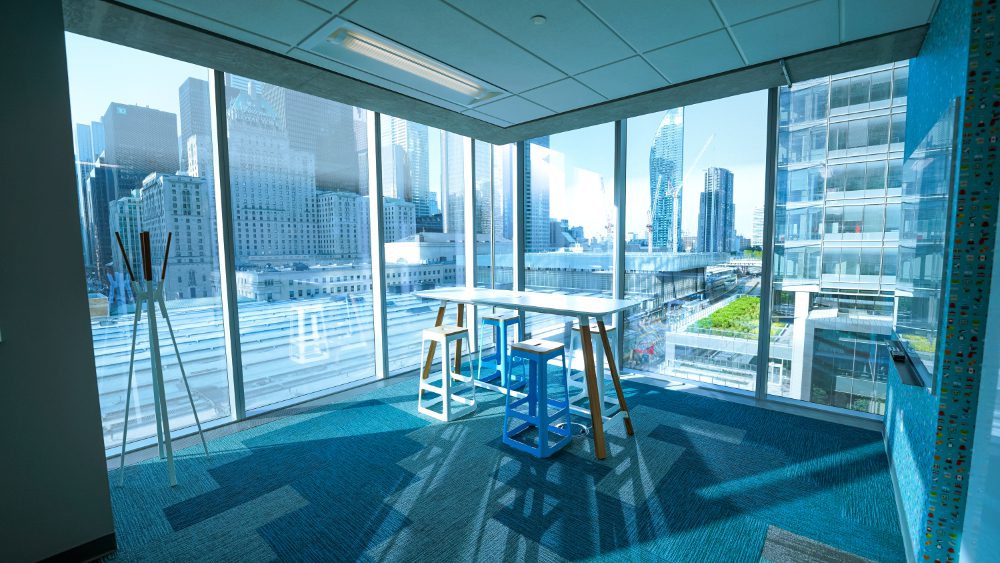
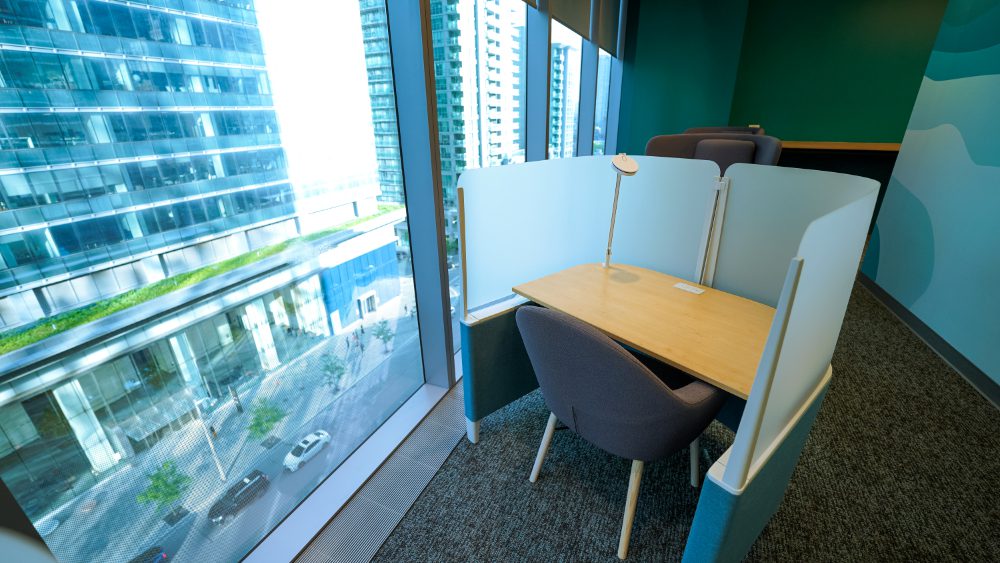
The office was designed with collaboration in mind, featuring everything from communal working areas to large meeting spaces to cafés where employees can gather for a coffee or meal. But for employees looking for a little more privacy, there are also smaller phone and meeting rooms, as well as cubicles with privacy screens.
And with the office being downtown, it offers employees some pretty spectacular views through the building’s floor-to-ceiling windows.
The design team behind the Southcore Financial Centre — the building where the office is located — placed a large emphasis on sustainability when crafting the tower. Eco-friendly infrastructure like a rainwater collection system, an advanced waste management program, and an automatic shade system all offer opportunities to reduce the building’s carbon footprint.
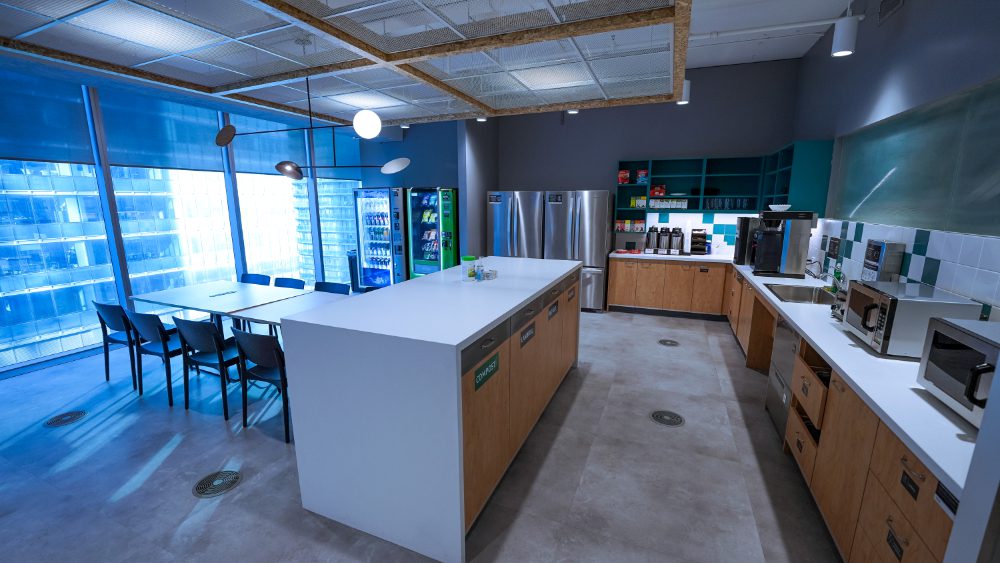
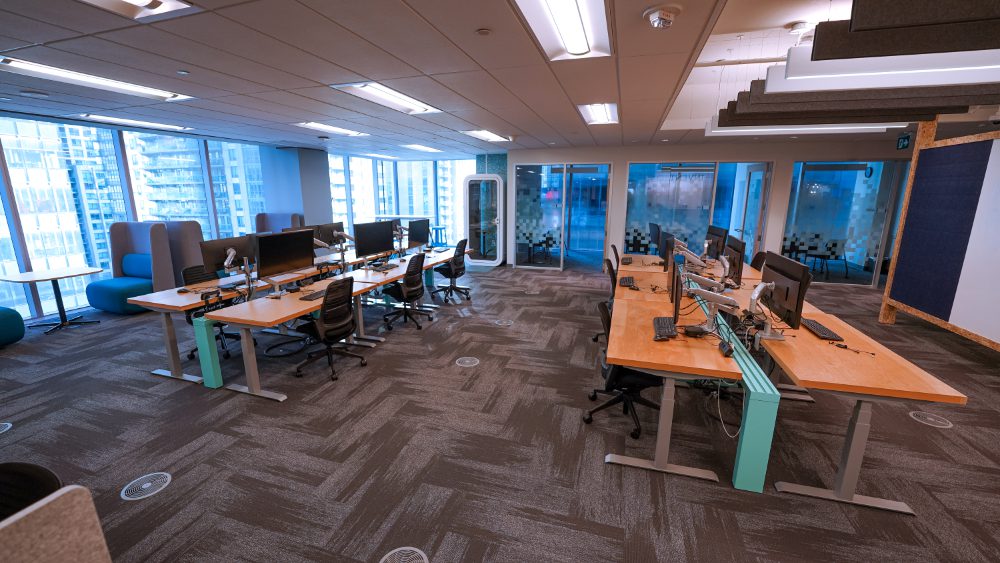
Out on the building’s third-floor terrace, there are five bee hives helping to pollinate all of the native species used in the building’s landscaping. The third-floor subroofs are also home to an urban forest, and the second-floor courtyard has been transformed into an urban park, bringing even more green space to downtown.
Although an already impressive addition to Toronto’s office spaces, this isn’t the end for Amazon. Even as some offices are downsizing their physical presence, Amazon is planning to keep growing with an additional three floors and 75,000 sq. ft of space set to open next year inside the 18 York Street location.

The now three Amazon Toronto offices are already home to more than 2,000 employees, but with hundreds of jobs currently accepting applications, that number will only continue to grow.
Source Storeys. Click here to read a full story
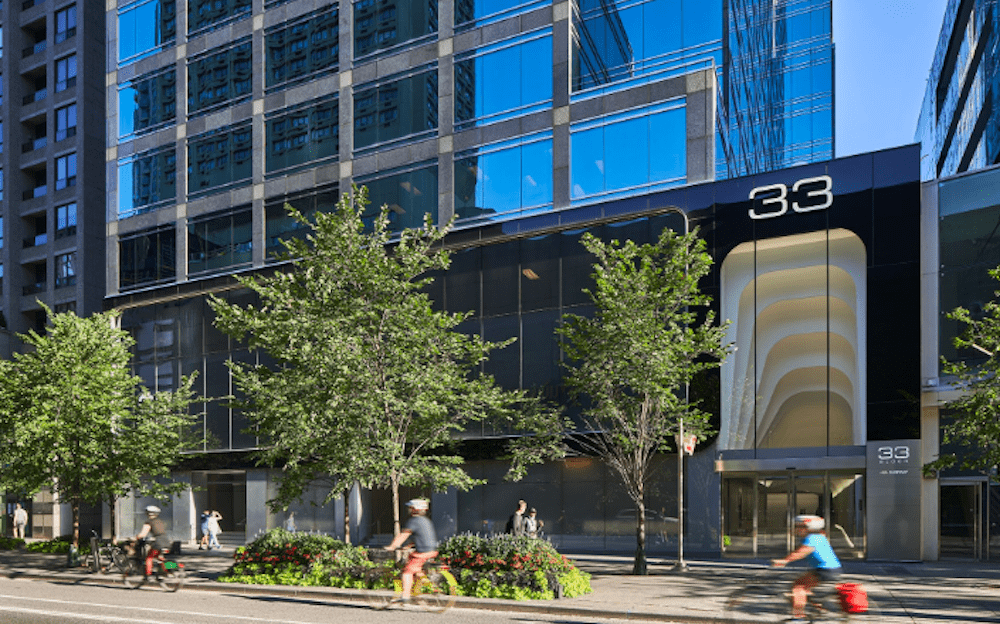
Co-Working Space ‘Industrious’ Opening First Canadian Location in Toronto
American co-working space and private office provider Industrious officially announced its Canadian expansion on Tuesday, with plans to open its first flexible workspace north of the border in Toronto.
“This new location allows us to plant our first flag in Toronto, one of the top performing office markets in all of North America, and a market our existing network of enterprise members has been asking us to expand into for years,” said Director of Real Estate at Industrious Sam Segal.
The Industrious location will takeover the former WeWork space inside of 33 Bloor Street East in Toronto’s Yorkville neighbourhood. Not only is the location steps away from Yonge Street, but the Bloor Street tower also has direct access to the Yonge/Bloor subway station.
“The building is right in the heart of a highly amenitized, mixed-use area comprising significant retail and residential development, with direct connectivity to Toronto’s subway system,” Segal said. “We’re confident this location will provide an accessible and amenity rich experience for our members.”
The new location will be dubbed Industrious Yonge & Bloor and will offer more than 450 seats across a whopping 36,000 sq. ft of office space. Similar to other co-working spaces, Industrious locations typically feature rentable office spaces for both individuals and teams, as well as shared common areas like meetings rooms and phone booths.
And Industrious is wasting no time with their Canadian expansion, setting the opening date for September of this year.
“Although we had interest from several providers, Industrious’ operating track record was best suited to provide quality flexible workspace that will be beneficial for the market and for our existing tenants,” John Shields, vice president of leasing at Epic Investment Services, the developer behind 33 Bloor Street East.
Industrious currently operates more than 100 locations across the U.S. and the U.K., and recently acquired two workspace providers in Asia and Europe, adding over 350,000 sq. ft to its portfolio. According to a release, the company is aiming to double its international presence by the end of the year through a mix of takeovers and organic growth.
Source Storeys. Click here to read a full story
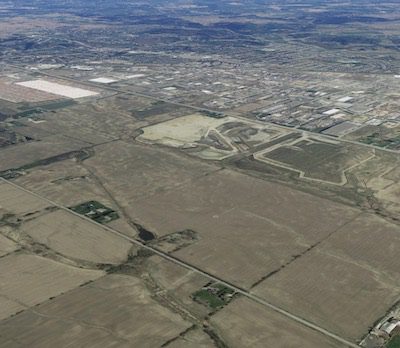
Solmar Sells GTA Industrial Land to Prologis in $500M Deal
A 198-acre tract of industrial development land in a prime logistics node in the Greater Toronto Area Town of Caledon has been sold in a near-$500-million transaction by Solmar Development Corp. to Prologis.
The property consists of two parcels, each almost 100 acres, at 12713 and 12519 Humber Station Rd., between Healy and Mayfield streets. It’s located at the edge of an area designated for industrial and commercial development, where a number of large facilities including Canadian Tire and Amazon warehouses have recently been developed.
The transaction closed today (June 9).
Benny Marotta, the founder and CEO of Solmar, told RENX in an exclusive interview the land is not far from a previous business park his firm developed in Bolton. When he considered the value of this tract of land, Marotta said he felt it was a better option to sell rather than develop it himself.
“We actually did an industrial development called Equity Industrial Park in Bolton,” Marotta explained. “We developed it, we built the buildings also. We do that. too, but this time the cost of the land is so high it is more beneficial to sell it rather than building on it.”
The Humber Station Road property
He said the economics of this property are more suited to a large-scale pension fund or investor such as Prologis, which would develop the site for longer-term stable income.
At one time, Marotta’s family-owned-and-operated company held about 500 acres in the area, but this was the last remaining tract. Previous tracts were also sold for development.
The property offers easy access to Hwy. 50, and the northern terminus of Hwy. 427. Hwy. 400 is a few kilometres to the east and the route for Ontario’s planned Hwy. 413 is right beside the site.
“There’s going to be a new Hwy. 413 coming out right adjacent to where the property is, with an exit, so those lands are perfect for employment,” Marotta said. “Caledon was smart enough to make an industrial hub in the area. Then there will be residential close to it, so that way the live-and-work (dynamic) comes into effect.”
Broker sold land to Solmar
James Doucette, the president and broker of record at Toronto-based JCD Commercial Realty, brokered the transaction and has had a long relationship with Solmar. He was also the broker when Solmar acquired the land about 16 years ago.
“I sold him all that land initially and now we’ve got the deal with Prologis,” Doucette told RENX. However, even in his wildest dreams, Doucette never thought that almost two decades later he’d broker another deal for the site at nearly $2.5 million per acre.
“No,” he said with a chuckle. However, conditions have changed radically, especially during the past few years. “Let me put it this way, there is pretty well zero vacancy . . .
“The other (industrial) buildings around here, and in the GTA from what I’ve seen and heard, there is no space available. It is just crazy,” he said, “and I know because I’ve looked for it before, and there is just nothing out there.”
According to CBRE’s Q1 2022 industrial report, vacancy in the Toronto area is at a record low of 0.5 per cent and asking rents increased for a 20th consecutive quarter to $13.59 per square foot. Rates for new or fully modernized properties can be considerably higher.
In addition to its location in an established industrial region, with good highway access, the Humber Station Road property is greenfield and virtually all of it is developable. Doucette said only a small portion of the site would be withheld from development.
Prologis and Solmar
He estimated this property could offer Prologis the potential to build up to, or slightly over, three million square feet of space. It acquired the site via a bid process.
San Francisco-based Prologis is the world’s largest owner and operator of industrial real estate.
The firm is currently involved in a takeover bid for another large, U.S.-based commercial real estate owner/operator, Duke Realty Corp. The bid values Duke at about $24 billion US but has been rejected by Duke management as “insufficient.”
Marotta formed Solmar in the mid-1980s and for many years was focused mainly on residential development and land.
That has expanded into multiresidential development in recent years, with projects in Vaughan (most recently, the sold-out Park Avenue Place), Brampton and Mississauga.
He is also developing a mainly single-family community of about 1,500 homes in the community of Erin, where site preparation has begun.
Solmar also maintains a land bank for future projects.
“The company has been doing what we are doing for the last 30 years,” Marotta said. “We always look ahead, so we have plenty of inventory.”
Source Real Estate News EXchange. Click here to read a full story
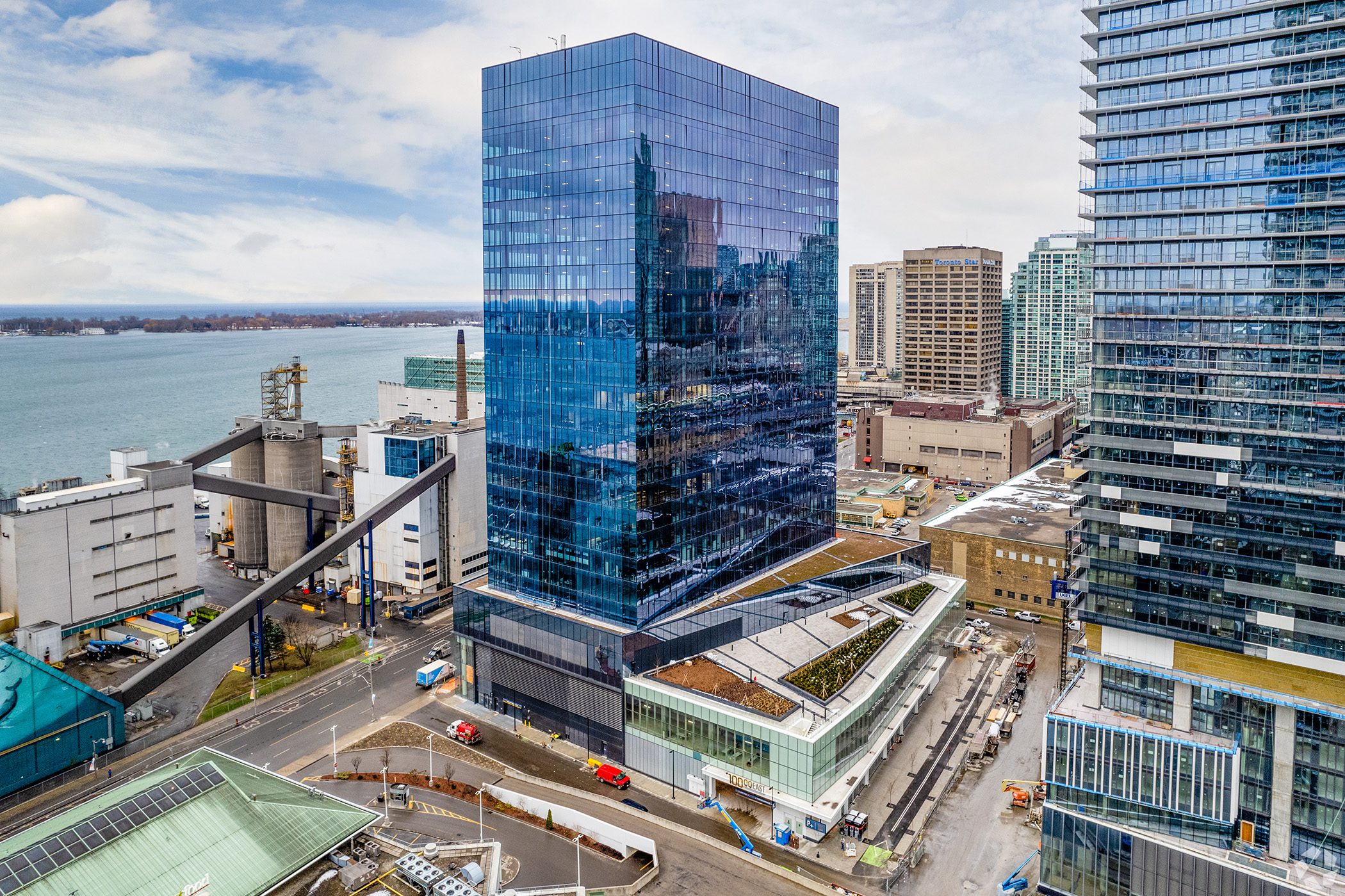
Canada Goose Flocks to Toronto Downtown Core for New Office Lease
Canada Goose is flocking to a new headquarters on the Toronto waterfront with one of the largest office leases of the quarter.
The retailer known for its parkas that can withstand even the most extreme cold has leased 115,000 square feet over four floors at Menkes Developments’ 100 Queens Quay East site in Toronto.
The lease signals an underlying confidence in the market and in the return to the office, according to a statement from CBRE, which represented the landlord in the deal.
“Many landlords would like to have Canada Goose as part of their project,” said Brendan Sullivan of CBRE in the statement.
Canada Goose will move its office operations to the waterfront from the company’s existing location at its manufacturing facility near Caledonia Road and Eglinton Avenue. Additional manufacturing space will be created out of the office space at the factory location.
Canada Goose will share rooftop signage at 100 Queens Quay East with the LCBO, the anchor tenant.
The Canada Goose deal brings 100 Queens Quay East to 92% leased, with 50,000 square feet remaining in the 875,000-square-foot building. Waterfront Innovation Centre, across the street, has just under 40,000 square feet of space available for lease, CBRE said.
Avison Young said the first quarter saw the Greater Toronto Area office market continue to recover from the impact of the COVID-19 pandemic.
“A second straight quarter of stable and promising results as occupiers continued to make plans for the future despite another pandemic wave that delayed the return-to-office intentions of many into the second quarter,” said the real estate company in a report issued in May.
Avison Young said the overall downtown vacancy rate for Toronto was 8% in the first quarter, up 2.1 percentage points from the first quarter of 2020.
“Delivery of new supply contributed to the rising vacancy rate, although net absorption was remarkably flat during the quarter, as the market gained only 1,400 square feet in occupancy,” said the real estate company.
Source CoStar. Click here to read a full story

Commercial landlords invest in quality to keep older buildings competitive
A cluster of office towers along Jasper Avenue was the commercial heart of Edmonton for a quarter of a century. But things have changed recently as new office towers are sprouting around Rogers Place, a few blocks to the north.
When major tenants moved to the newer buildings offering more amenities, some older Class A buildings ended up nearly vacant. In the core, vacancy rates were over 13 per cent before the pandemic and they now stand at around 18 per cent, with older A class buildings as high as 21 per cent.
As available space increases, we’re going to see landlords getting much more competitive to offer compelling rate structures but also investing in their buildings and lobbies.”— Jon Ramscar, national managing director at CBRE
“We’re seeing a flight to quality, to new products that have state-of-the-art HVAC and mechanical systems, larger floor plates and offer lifestyle and amenity-rich environments and social hubs,” says Mark Hartum, principal with Avison Young in Edmonton. To stay competitive, landlords of older buildings are heavily investing in renovations that add collaborative space.
Flight to quality has gained momentum in cities across Canada in the wake of the pandemic, as tenants want amenities that attract workers accustomed to working from home back to the office, says Jon Ramscar, CBRE national managing director based in Toronto.
With vacancy rates at historic lows prepandemic, he says, landlords had less incentive to make investments in fully leased buildings.
“But as available space increases, we’re going to see landlords getting much more competitive to offer compelling rate structures but also investing in their buildings and lobbies,” he explains.
“Ventilation and touch-free surfaces are big asks because of the pandemic and most quality buildings have upgraded their filtration and air handling and made access points and fixtures in washrooms touch-free in the past two years,” he says.
But now features as simple as coffee houses and bike-storage facilities for those who commute by bike have become significant differentiators as potential tenants consider an office move.
State-of-the-art technology is essential as tech companies are the drivers of office demand seeking out new Class A buildings across North America, he adds. That’s also increasing demand for buildings to consider environmental, social and governance factors to achieve net zero, which will have a huge impact on future investments.
“The market was so tight for space before the pandemic that everyone could lease space no matter what space you had,” says Scott Watson, managing partner, acquisitions and leasing for Crown Realty Partners, whose portfolio includes 70 office buildings in Toronto and Ottawa. “But today when vacancies are in the high teens in many markets, it’s way more challenging,”
With supply outstripping demand, even normally competitive Toronto is seeing double-digit vacancy rates, he says. “The average tenant looks at four spaces before they commit to an office building. And when you look at the financial core of Toronto, there’s a lot more than four buildings competing. It’s tougher to stand out, so you have to offer unique amenities to be attractive.”
Prebuilding suites is a way to get ahead of the curve, Mr. Watson says, as tenants want fully move-in-ready space. Crown has been building suites on spec in its buildings with efficient layouts and new finishes and app-enabled conference centres.
“We want our office experience to feel fresh and inviting from the moment you enter our building doors to the time you sit down at your workspace,” he adds.
In the past, Crown’s prebuilt suites were seldom larger than 3,000 square feet. But “recently we’ve been increasing those sizes; we have one in construction right now that’s a 21,000-square-foot full floor at a cost of about $1.2-million, in the hopes of attracting a tenant and competing with new spaces that are out there.”
Reinvestment in buildings to keep them competitive will be essential even as the office market recovers, Mr. Hartum says. “The alternative is to compete on price alone, which is not ideal [because] if landlords don’t achieve enough economic rent, the result will be less capital available to reinvest in the building and its systems.
“Long term, this is not a good solution, and forces tenants to shop around and continue to empty out these older buildings. That isn’t healthy for the market as a whole.”
Edmonton landlords have been inventive and invested in rebuilds that are attracting new tenants to vacated buildings, he notes. An example is the 22-storey 103 Street Centre near Jasper, built in 1980. It saw most of its space vacated when Enbridge decided to consolidate its offices in a new building.
To bounce back, AIMCo/Epic Investment Services did a rebuild of 103 Street Centre aimed at the growing tech community in Edmonton. The lobby and second floor were connected by a “social staircase,” with bleacher-like seating for people to sit and have conversations or work on a laptop, along with a flexible presentation space for more than 100 people on the main floor.
Other additions include a conference centre, meeting rooms, tenant lounges, a games room and a kitchen and dining area. It’s been so attractive to new tech clients that the vacancy rate plummeted from 95 per cent to just 22 per cent, “which is still high, but it really has been a substantial turnaround,” Mr. Hartum says.
In another building known as First and Jasper, managed by GWL Realty Advisors, Avison Young has been engaged to handle project management of the main floor of the 20-storey building on Jasper Avenue which housed retail tenants that were struggling.
The space was rebuilt into tenant-focused amenities, including a lobby refresh, fitness and wellness centre, conference and meeting centre, parcel storage and concierge desk, Mr. Hartum says. The building is also pet friendly, which isn’t common in Edmonton, he adds.
The intent is to continue adding new tenants similar to the tech companies that recently joined the building, including Google DeepMind which is opening its first AI research labs outside of Britain.
Leasing interest picked up significantly across Canada as lockdowns have ended, “but we’re still on hold waiting for a lot of large organizations to commit to their longer-term office plans, whether it be renewing leases, reducing their space needs or even increasing their footprint to accommodate new amenities for the employees or business expansion,” Mr. Ramscar says.
Tenants who may have put space up for sublease during the pandemic are now holding on to it waiting to see how quickly workers return to the office.
“Leasing activity is expected to increase throughout the remainder of the year as occupiers make decisions on their office space,” Mr. Ramscar says, “and we fully anticipate a continued focus on the flight to quality.”
Source The Globe And Mail. Click here to read a full story
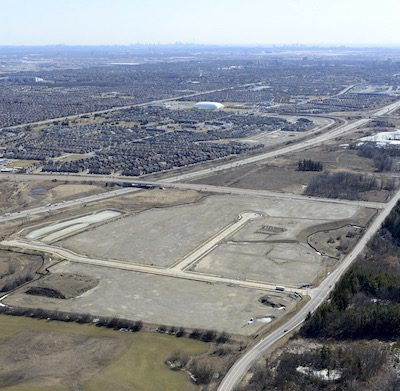
Berkshire, Fiera JV to Build GTA’s Heart Lake Business Park
Berkshire Axis Development and Fiera Real Estate have broken ground on the 750,000-square-foot Heart Lake Business Park in Brampton, just north of Toronto.
The project is site-plan approved, with building permits in hand for four buildings so far, and all of the major structural construction materials have been secured.
A five-building speculative industrial development will be built in phases and is being marketed by Cushman & Wakefield’s Fraser Plant, Michael Yull and Rory MacNeil. The brokers are targeting e-commerce, general distribution, light manufacturing, life sciences and pharmaceutical sectors for the first phase.
“They will all be 40-feet clear,” Plant, Cushman & Wakefield’s senior vice-president of operations, told RENX. “Usually buildings of that size are 32 to 36.”
Leased buildings to be delivered in phases
The first phase of construction is underway at 10 Newkirk Ct. with a 316,452-square-foot building and 15 Newkirk Ct. with a structure totalling 105,896 square feet. The larger building will have 16 trailer parking spots away from its docks.
“For the large building, if you’re in the market between now and the next 12 months for 300,000 square feet in the GTA West, you really don’t have any options,” Cushman & Wakefield executive vice-president Michael Yull told RENX.
“All of the other buildings have been leased or are about to be leased. We have the market captive from that sense, so we’re anticipating a lot of interest.”
The smaller building will feature double-sided shipping, which is rare for a structure of that size and should help drive interest.
“The ownership group would prefer to see single tenancies,” Plant said. “That could change, depending on who shows up and what the covenant is, but we’re gearing to leasing these buildings out to single tenants.”
The larger building is expected to be delivered at the end of March 2023, while the smaller one should follow two months later.
The other three structures to be built and leased at Heart Lake Business Park will be approximately 109,000, 105,000 and 87,000 square feet, respectively.
“Due to the aggressive nature of the ownership group as well as their confidence in this location – and ‘pedal to the metal’ is their motto here – I would think delivery of Phase 2 would probably be toward the end of 2023,” Plant said.
Heart Lake Industrial Condominiums
There will also be 61,000- and 46,000-square-foot industrial condominium buildings, with a combined 26 units that range from around 3,500 to 5,500 square feet, as part of Heart Lake Business Park. They’ll have 28-foot clear heights and truck-level loading.
Berkshire Axis has been delivering industrial condos for 10 years and vice-president Craig Wagner told RENX interest in these units really started to pick up about five years ago.
“We were very excited to be able to carve out part of the site to deliver to the condo market,” said Wagner. “It has been, and currently is, a very strong market.“
Wagner said the Heart Lake Industrial Condominiums units are about 70 per cent sold and are being released to the market one or two units at a time, with a goal of being sold out when they’re ready to be delivered at the end of this year.
Good location and existing infrastructure
Heart Lake Business Park is located along the Highway 410 corridor with relatively easy access to all major 400-series highways. It’s within a 20-minute drive of Toronto Pearson Airport and CN’s Brampton and Vaughan intermodal sites.
The building at 10 Newkirk Ct. offers signage and visibility opportunities directly on Highway 410.
“The project is closely tucked-in to dense residential, so it has access to a large population base,” said Yull.
Berkshire Axis and Fiera Real Estate acquired the site in July 2021 for $91 million. The vendor was subdivision developer Emery Investments, a privately owned, Toronto-based real estate development and property management company that’s been operating for more than 50 years.
All of the roads for the subdivision are in place and all of its blocks are serviced.
“Emery is a very experienced subdivision developer,” said Wagner. “Once we got into our due diligence, we realized their group had lined everything up very well and there was going to be speed-to-market and speed-to-delivery.”
Berkshire Axis and Fiera’s partnership
Heart Lake Business Park is the seventh project in which Berkshire Axis and Fiera Real Estate are partners.
“It’s not that we have an exclusive relationship with each other, but we certainly have a great deal of respect for each other and a great deal of respect for our working relationship,” said Wagner. “So when the opportunity came around, it was an easy choice to go to Fiera.”
Toronto-headquartered Fiera Real Estate is wholly owned by Fiera Capital Corporation, a multi-product investment management firm with more than $174.4 billion of assets under management as of March 31.
Fiera Real Estate is an investment management company with offices in North America and Europe and more than 80 employees. It globally managed more than $7.6 billion of commercial real estate through a range of investment funds and accounts as of March 31.
Toronto-based Berkshire Axis has more than 25 years of experience in delivering industrial and residential projects across the Greater Toronto Area (GTA). It has completed more than 30 industrial projects over the last 10 years.
“We buy existing multi-tenanted industrial buildings that we convert to condos, we do new-build industrial condos, and we also have the build-to-suit and build-to-lease program that we’re running with Fiera,” said Wagner.
“All three of those, if we can find the right sites in the right locations with the right timing, should set us up to deliver substantial value for our investors.”
Those investors include a small group of high-net-worth individuals and institutional partners, according to Wagner.
Other recent Berkshire Axis activity
Berkshire Axis has several other projects in the GTA.
It acquired a 70-acre site at 12505 Heart Lake Rd. in Caledon early this year and is looking to rezone it from agricultural to industrial.
“I’m not 100 per cent sure what we plan to deliver there just yet, but we’re very excited about that site,” said Wagner.
Berkshire Axis recently signed its final lease deal at its project at 11050 Woodbine Ave. in Markham, which has 330,000- and 300,000-square-foot industrial buildings with 36-foot clear heights and drive-in and truck-level loading.
They’re both now fully pre-leased and are due to be completed in Q4 2022.
Berkshire Axis should launch sales for its first industrial condo project in Aurora — at Addison Hall Business Park, which was also developed by Emery Investments — in the next 60 days.
The company bought an 8.5-acre, fully serviced lot and will deliver 130,000 square feet of space in three condo buildings. Two will have truck-level doors and one with smaller units will have drive-in doors.
Source Real Estate News EXchange. Click here to read a full story

The Core is Calling Companies Back As Downtown Toronto Reawakens
Cities have always attracted the best and brightest — that’s how they became centres of technology, finance, arts, and culture. When brilliant minds bump into each other, it’s a particle accelerator of innovation.
But something is lost if everyone is Zooming through the day, working from bedrooms and basements. The pandemic threatened the greatness of cities with a great exodus — but even amid this migration, many are eager to get back in.
“Our stance is that there’s just so much happening downtown that, you know, the city can’t die — urbanism can’t die,” says Riel Sammy, partner of creative strategy at Channel 13, a specialized agency with a focus on branding.
“People moved away and went further out, basically saying that the city is dead. But the city is coming back to life, companies are going back to office, retail is coming back.”
Pre-pandemic, Channel 13 kept traditional in-office business hours in a space in Vaughan — and the area was a good fit at that time, Sammy says. They pivoted to remote work like many other industries, picking up staff in Vancouver and Europe, but the agency is now ready for a big move: they’re taking a WeWork space downtown at 240 Richmond.
It’s the right fit for Channel 13, Sammy says — as creatives, they trade in ideas and culture, strategy and vision. Toronto’s core, he says, is both the inspiration and audience for such an industry.
“I think you need to see what’s going on in order to be part of the conversation, right?” Sammy says. “You can’t work in a vacuum and produce something that resonates, and is of the time — or is timeless. You need a point of reference to what has happened and what is happening. And that’s really the idea — we’ll be in the core of what’s going on.”
‘More to be inspired by’
Some of us are lucky enough to call our coworkers a “work family” — these are the people we spend half our time with, through good times and bad. Slacking GIFs to a colleague is amusing, but doesn’t replace some of the great communal traditions of great teams; it doesn’t create memories.
“We just recently did this before we got our office full-time,” Sammy says. “We had a collaborative team brainstorm, we worked through a couple of projects, and then close to the end of the day, we were able to just walk down Queen and get into a great restaurant. And we all shared a meal at the end of the day — together.”
Although Channel 13 lives and breathes in the digital realm, he adds, there’s something to be said for these strolls through the city’s great neighbourhoods.
“There’s just more to be inspired by, there [are] more people, there [are] all walks of life — and restaurants and retail [are] inspiring to us,” Sammy says. “Just a wide variety of things that we pull inspiration from. In my school days, in university, that’s what I would do — after a class I’d take a walk and that would clear my head, it would help ideas flow. I don’t think it’s as inspiring to have to jump into a car and sit in traffic to drive somewhere for 15 minutes to grab a bite to eat.”
‘Wow, it feels almost like how it used to’
Returning to the core brings people back to the services and shops that relied on this daily influx of customers — reviving local economies and keeping street life interesting and bright. It supports small business; no one likes a string of empty storefronts in their neighbourhood. It keeps the “sights and sounds” alive.
But remote work also brought unprecedented flexibility, the ability to hire global talent, and more hours in the day without a commute, Sammy points out. Channel 13’s new downtown arrangement will be a hybrid model for its staff, recognizing the “ebb and flow” of solo work and collaboration.
Sammy’s optimistic for 2022; he thinks as more companies make similar moves, there will be a resurgence of energy and creativity in the core. Even with a “soft” opening ahead of their formal June move-in date, there have been pleasant surprises from Channel 13 staff.
“Funny enough, recently, a whole bunch of us just showed up to the office without it really being planned,” Sammy says. “It was like, wow, it feels almost like how it used to.”
“And we have a team member, she lived in Barrie when the pandemic happened. She moved further north and she loves the country, she loves being in nature. We thought, ‘she’s never going to come to the office downtown.’ And she came yesterday; just like, ‘Hey, I want to collaborate. I have work that I want to get people’s opinions on. I want to talk about it.’ And it was just exciting that she was back with the team — she came, she showed up. And so it’s cool to see that.”
Source Storeys. Click here to read a full story
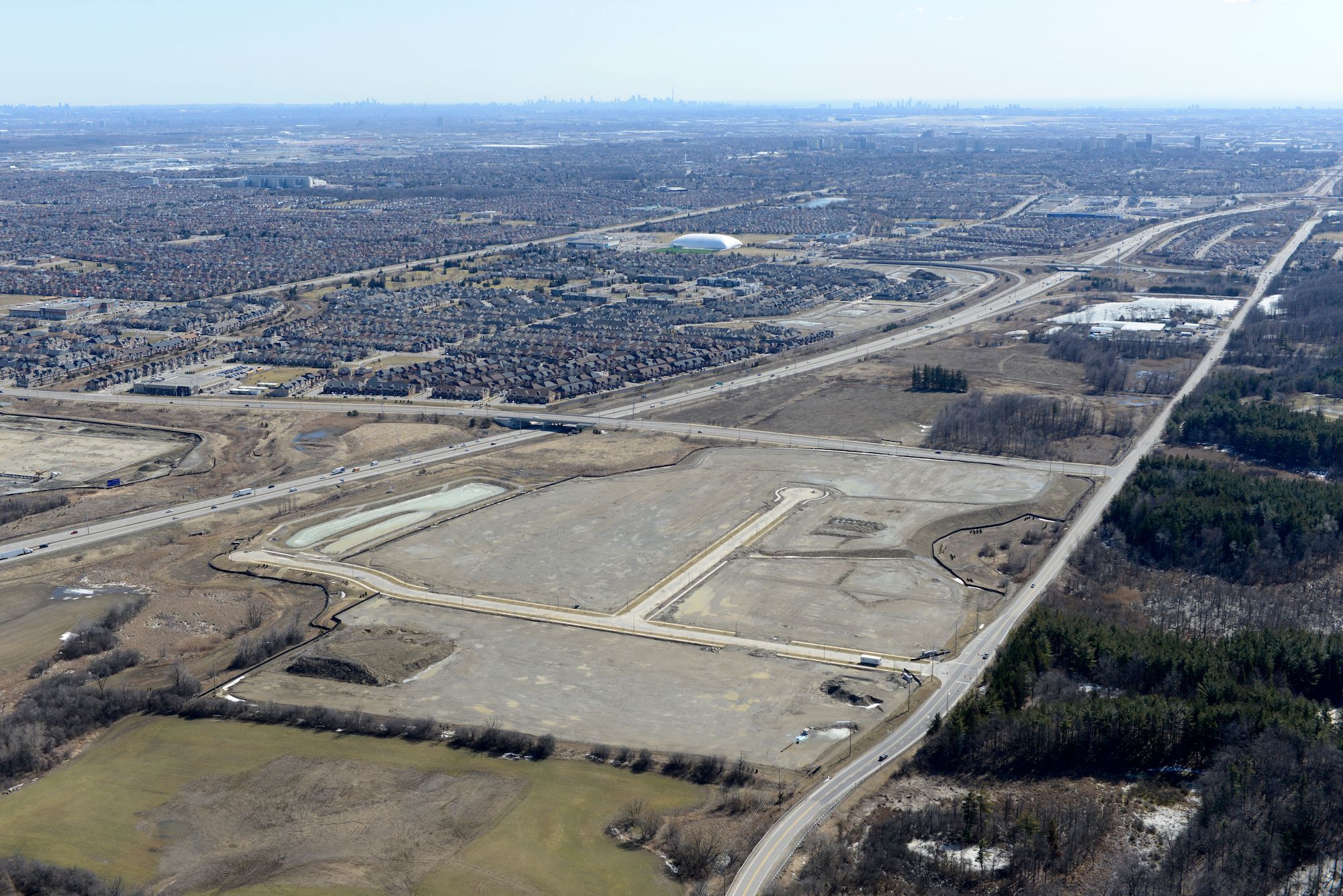
Developers Move Forward With Speculative Industrial Project in GTA as Vacancy Rate Dips Below 1%
Almost 50 kilometres northwest of Toronto, developers broke ground this month on the first phase of what is expected to be five industrial buildings on a speculative basis, meaning without any tenants signed on, but renting the space is not expected to be an issue.
Fiera Real Estate and Berkshire Axis Development are building the multiphase industrial development in the Heart Lake Business Park in Brampton, Ontario. They bought the 43.7-acre site last year.
The plans seem like a good bet with the latest data from Cushman & Wakefield showing the Greater Toronto Area had a 0.7% vacancy rate in the first quarter.
Fraser Plant and Michael Yull, executive vice presidents with Cushman & Wakefield, brought the deal to the buyers last year.
“The sites were already defined on what you could build,” said Yull, who wouldn’t disclose the price the buyers paid, in an interview with CoStar News. “It was a very shovel-ready acquisition, probably the most shovel-ready acquisition of a development site in the GTA last year.”
The first phase of construction has begun at 10 Newkirk Court for a 316,452-square-foot building and at 15 Newkirk Court for a 105,896-square-foot structure. The first phase is expected to be completed in the first quarter of 2023.
“GTA industrial vacancy is less than 1%, making the region the second tightest industrial market in the Americas. What’s more, Heart Lake Business Park’s modern design and construction makes it ideal for a number of uses and types of tenants,” Kathy Black, senior vice president of development with Fiera Real Estate, said in a statement.
Leslie Marlowe, president and managing partner of Berkshire Axis, said the project would be his company’s largest industrial development in the GTA. He called the project one of Brampton’s last significant greenfield sites in a key Toronto market with strong highway access.
“With regulatory hurdles cleared and construction materials secured, our ability to deliver on schedule separates us from other GTA speculative projects in a market that absorbed a record 14 million square feet last year and only shows signs of accelerated demand,” said Marlowe in a statement.
Yull said it took years to get the project through the regulatory levels of government by the previous owner, but the vendor always planned to sell once it received various approvals.
Marketing of the first phase just rolled out in the past two weeks, and Yull’s view is that with no larger buildings in GTA West being completed in the next 12 months, it should result in a lot of interest.
“The building is positioned very well from that standpoint,” he said.
There is 23.8 million square feet of industrial space expected to be completed across Canada in 2022, according to Cushman & Wakefield.
“If all this new supply does indeed arrive this year, this would be the highest annual total of new supply that has arrived across Canada since 1989,” said the real estate company in its first-quarter report.
Yull said there are headwinds, including conflicts in Europe and rising rates, that could cause some tenants to pause on commitments, but the market is so tight in the GTA that it could take years for supply to catch up.
“If there were zero demand over the next five years, it would take five years to get back to a 5% vacancy rate,” Yull said.
While some landlords are reluctant to prelease in the industrial market with rising rents, these developers are ready for offers from tenants with strong credit.
“We are open for business now, and we will deal with tenants as they come,” said Yull, noting lease rates in Brampton for industrial real estate are heading toward $18 per square foot with rent escalations of 3% to 3.5% annually typical in contracts.
The clients, in this case, are looking for a 10-year deal, even though Yull said some landlords want shorter-term rates to take advantage of the rising rental environment.
“The 10-year deal is what most institutional landlords want,” said Yull.
Source CoStar. Click here to read a full story


